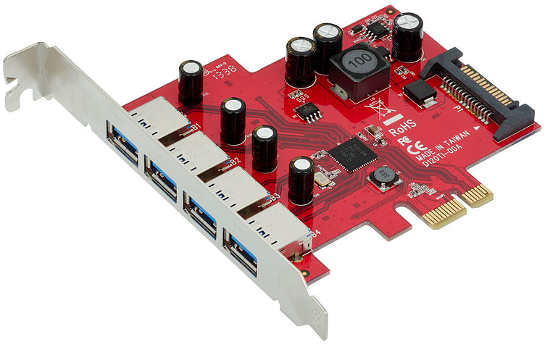This may not solve all possible problems, but it can certainly solve some of them
You plug your USB audio interface into your USB port. Great! The sound is there, the drivers show up in your app, and you think you’ve reached sonic nirvana.
Then you plug in a USB hard drive, and…snap, crackle, and pop. Your audio interface just became unuseable…or did it?
In a typical desktop computer, all the USB ports—even if they appear in different places on the computer—are all controlled by the same controller chip, and there can be a certain amount of “crosstalk” between the ports. Normally this doesn’t make a difference, but when audio gets involved, it can be a different story.
One near-certain solution is to get a quality USB PCI or PCIe card, add it to your computer, and use that to run your audio interface while your hard drives and other USB devices use the motherboard’s USB ports (rarely, but sometimes, the reverse is the solution—hard drives on the card, audio on the motherboard). However, don’t try to economize by getting a card with USB and FireWire: Many users report problems with audio interfaces. If you’re using a USB interface, get a USB-only card.
